Good day!
Recently, there was a desire to update the backpack to his second grader. And, of course, as not only a Habr’s writer, but also as a Habr’s reader, he glanced towards XD (perhaps we’ll get to him).
However, at the last moment before November, he became the owner of a Pixel backpack. In short, I did not solve the problem with the school backpack, because in the end I decided to keep Pixel for myself.

Delight, review, observation - inside!
Let it be a slightly inverted review, and I will start right away with the result: I really liked the backpack both from an emotional point of view and in its main characteristics. In my opinion, the gadget backpack is 90% composed of advantages, but maybe emotions still speak in me and you will correct me.
It seems that everyone should like it, but, following the comments on other posts about backpacks, I can say for sure that he will disappoint those who like to put something in the outer side pockets. The rest - do not complain.
ProloguePixel MAX is a member of the
Pixel backpack family. The main distinguishing feature of such backpacks is the presence of a display. Of course, the idea was borrowed from Kickstarter and the rapidly spreading likes of Aliexpress.
From the pioneers -
PIX models - our sample is distinguished by half the price, and from the first followers from "Alik" - a very decent quality with a "finish" in Russia. The panels, as the manufacturer confirms, still go cross-border, but the production phase has been moved to its native expanses.
Frankly, I do not think that the product should be considered as a copy, because the idea of LED-clothes, accessories on the surface. Let's say I first came across this kind of information format on TV when I was watching Comedy at the institute, where Mr. Rodriguez seemed to have an LED strap.
The display as a design element is also familiar in the Luxury segment, for example, the designer
DIANA BROUSSARD comes to
mind . In general, in such cases I always prefer a phrase such as: “the authors were inspired ...” and consider the device as a separate product.
Part 1. The desire to please everyoneCreating any new, innovative and original product, you cannot but take into account previous experience. Roughly speaking, you are forced to take all the most positive from your predecessors, remove all negative and add new ones.
In this sense, I must say that Pixel clearly focuses on the top category last year, namely: “anti-theft backpacks”. First of all, this is expressed in a sufficiently strong fabric, which, by the way, has water-repellent characteristics.
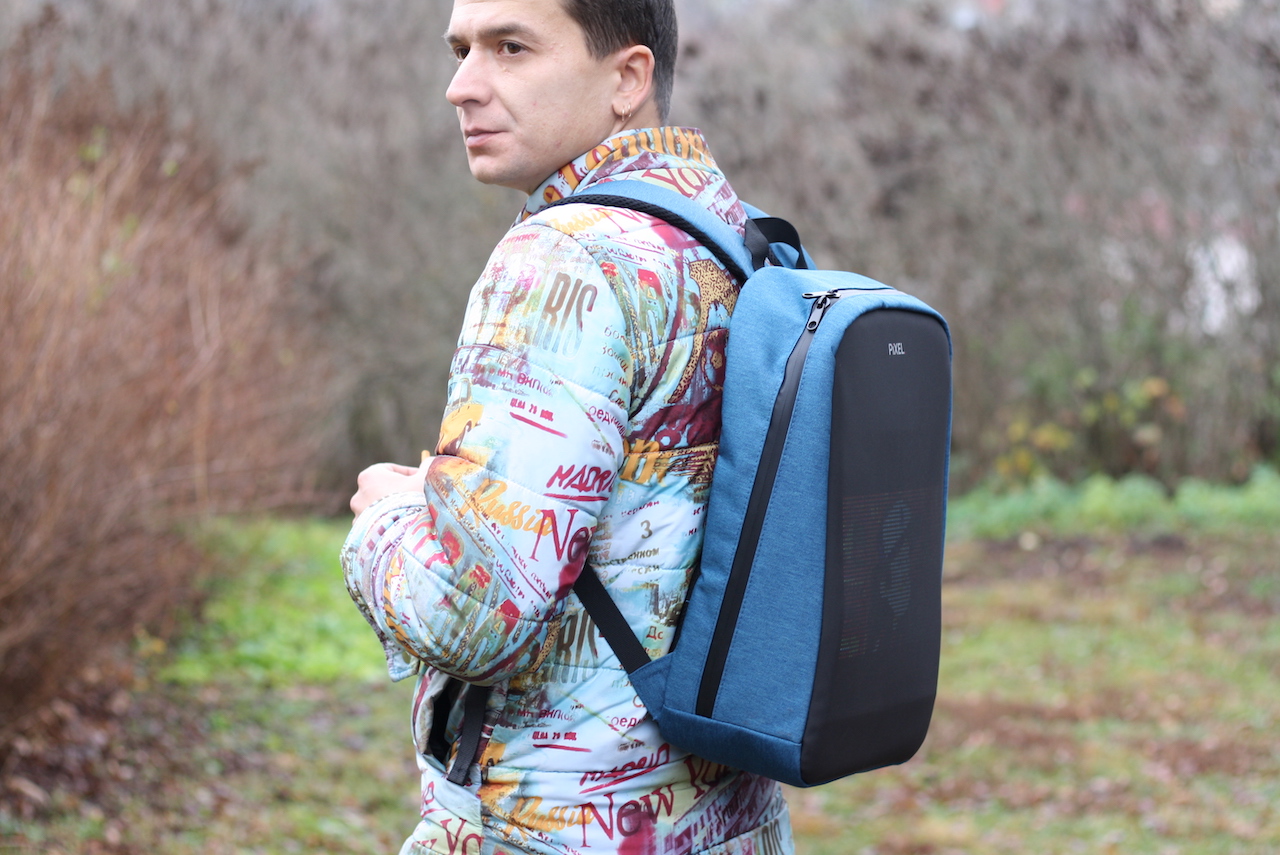
Secondly, this is the lack of external pockets. And finally, a hidden pocket on the back.

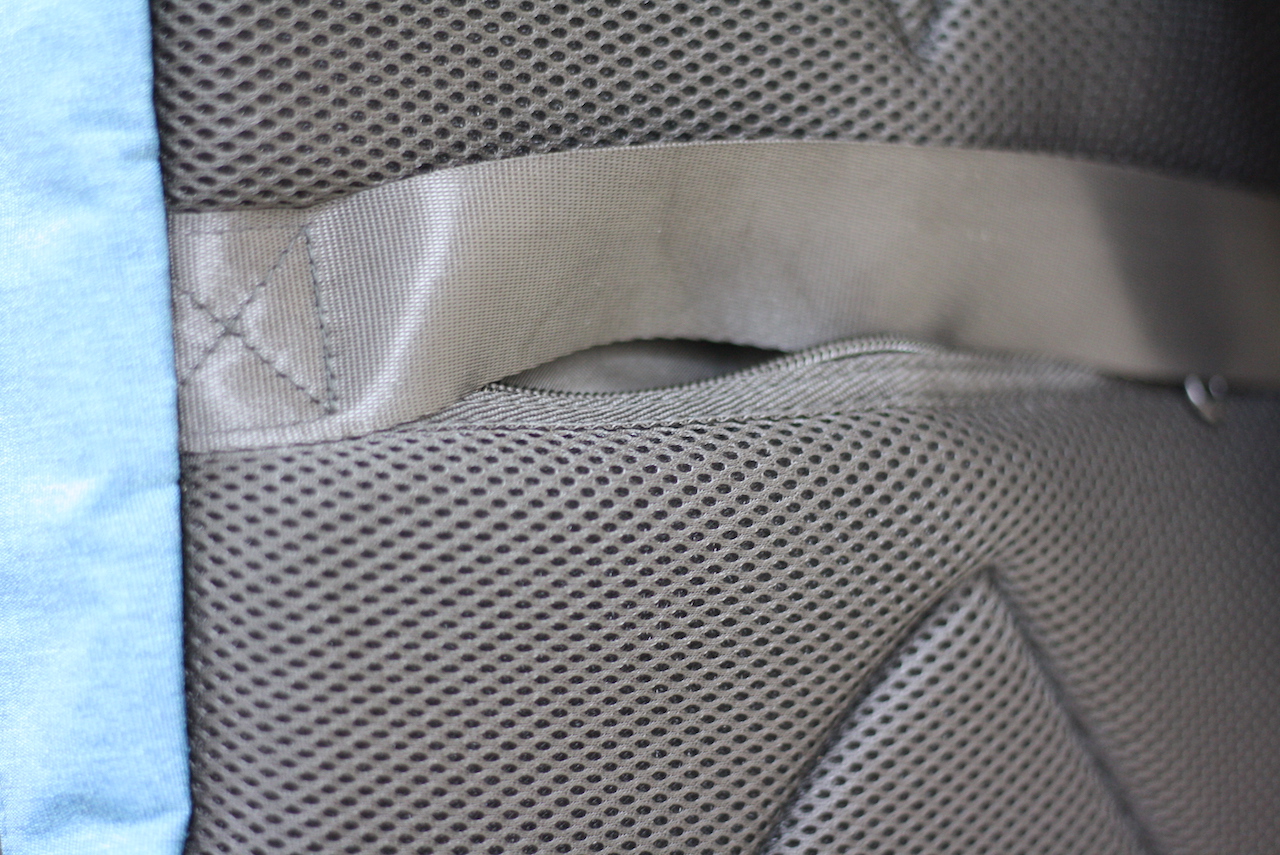
The backpack is made reliably. Seam to seam in the absence of protruding threads. I especially note the good hidden zipper.

I had enough time to get into the most inaccessible places, and from all these places I came out quite pleased. I even tried to turn it inside out a little:
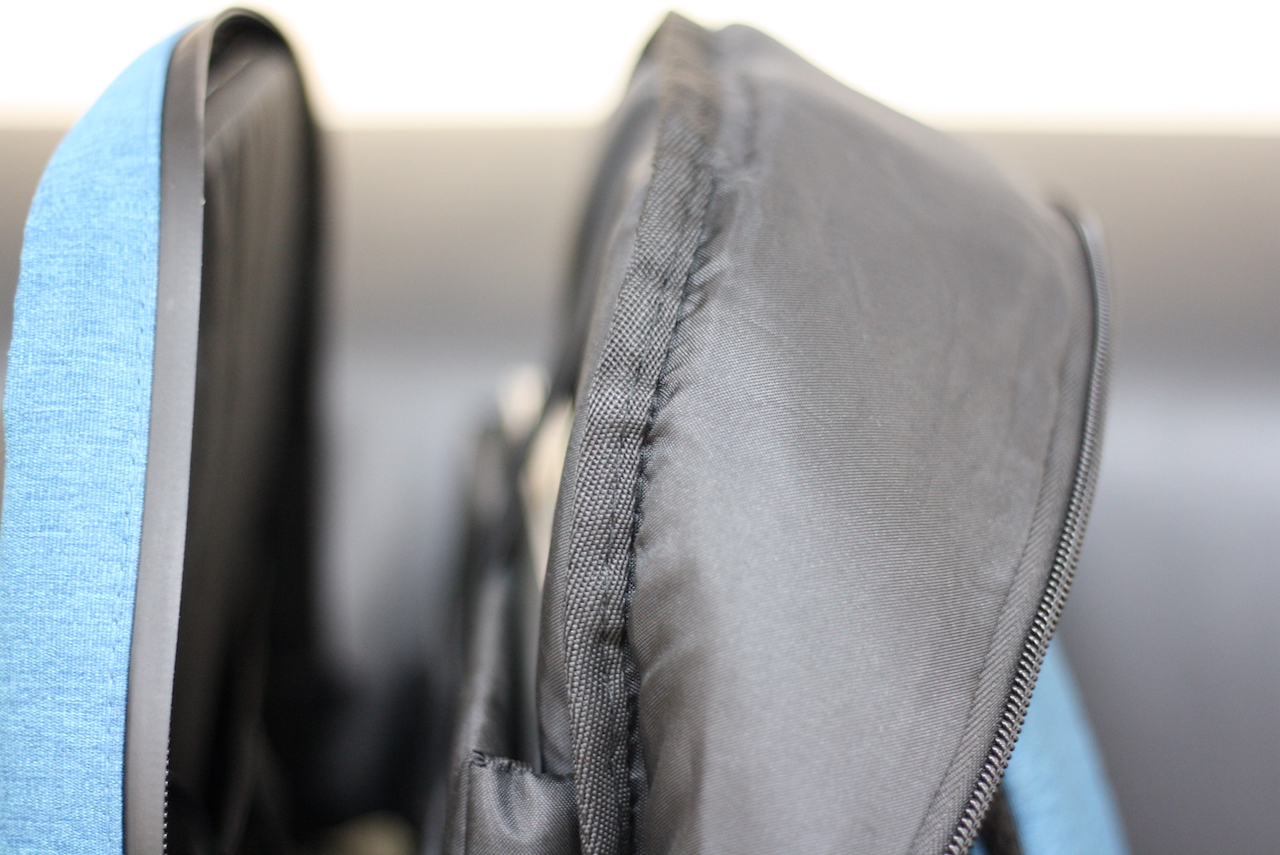
Sewing no complaints. Externally, the Pixel has the shape of a rectangle. In profile - a rectangle slightly expanding to the base (I do not remember how it is in geometry).
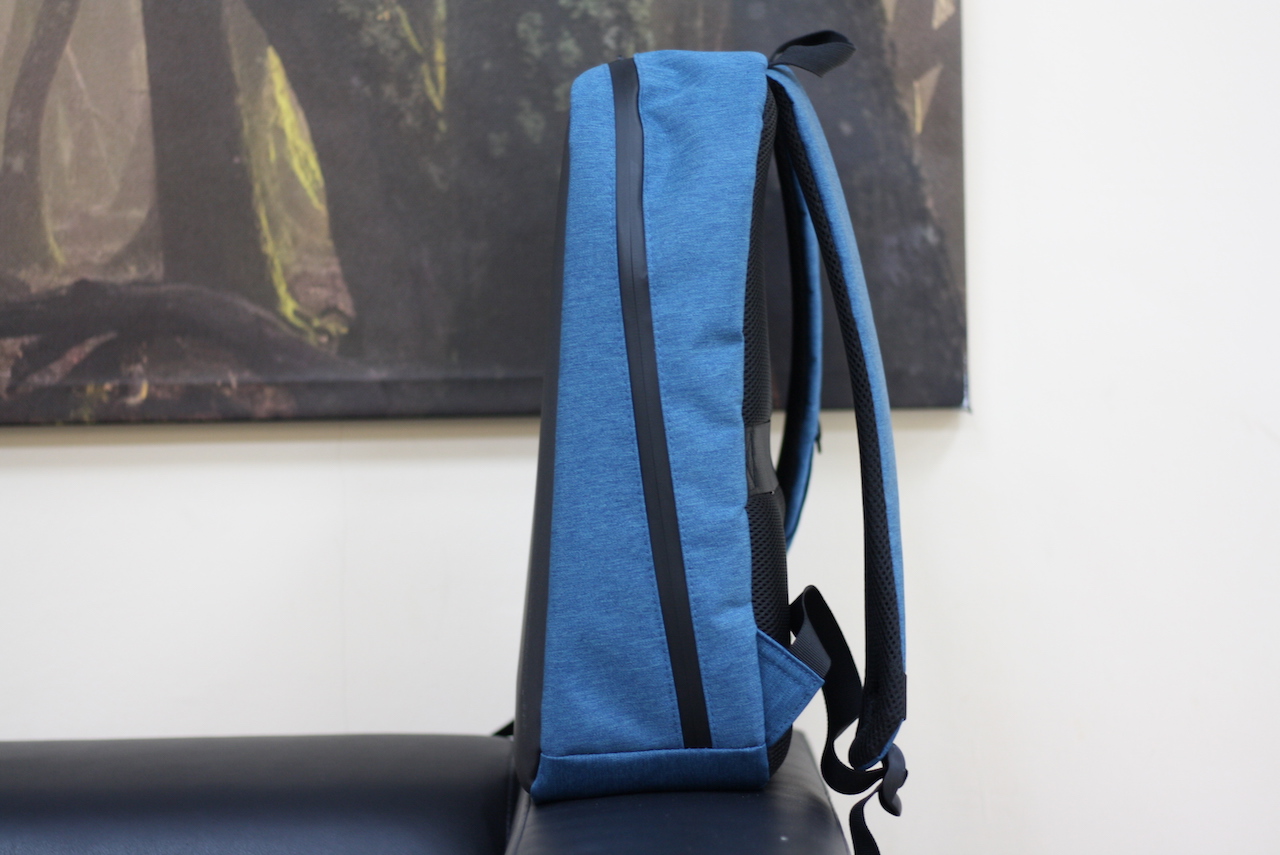

Despite the fact that lightning reaches almost the end, it will not fall apart in a book. On the one hand, this is strange, on the other - it seemed to me a good solution. As far as I can tell, "flopping" is a rather controversial principle in assessing the local users.
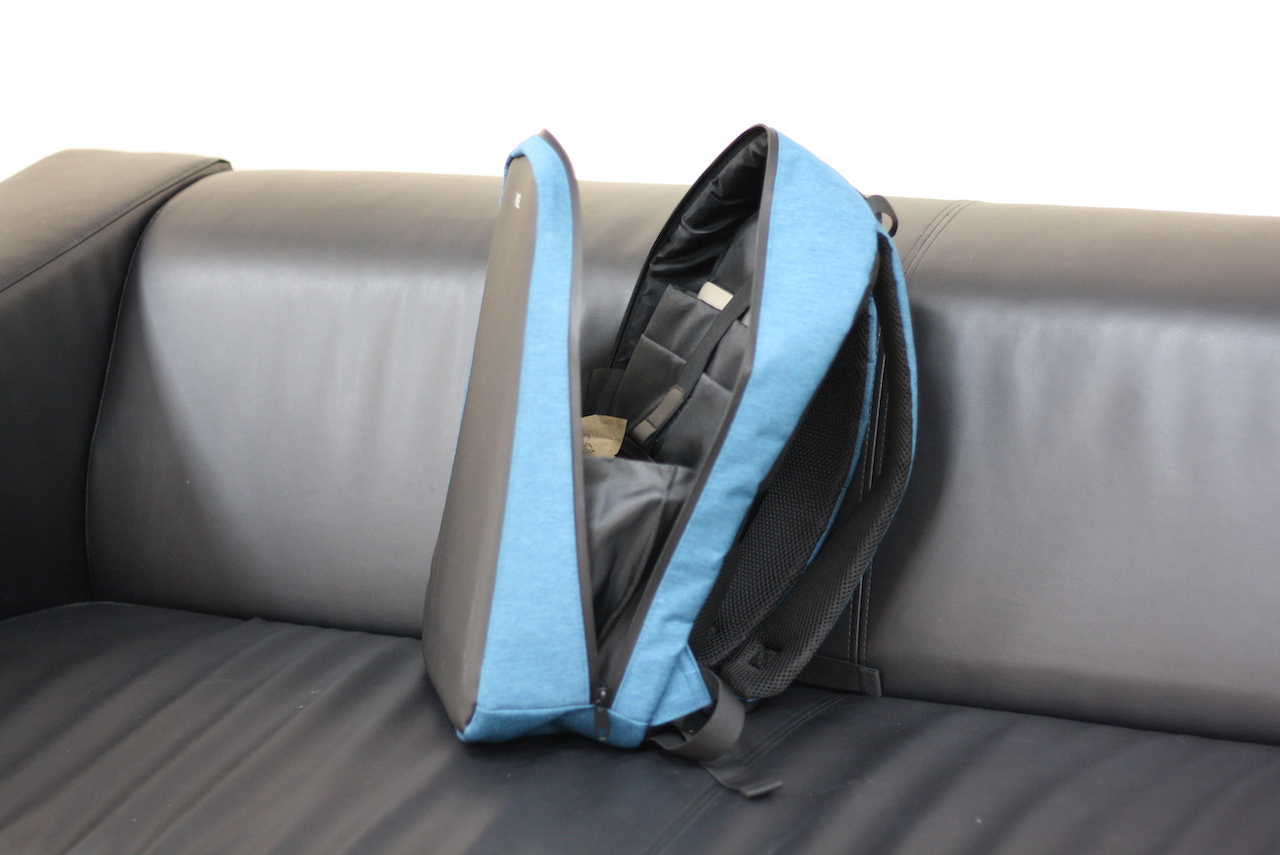
The back of the backpack is soft and mesh. The grid, as I understood from recent comments, is also a very mixed decision, because it causes spools. There is experience with this - I came across spools on clothes in my lower back.
In my observations, this does not happen with all types of clothes: firstly, a jacket and jeans are obviously less prone to neoplasms. Secondly, for some reason, I have spools exclusively on the Eco-Endam product from eco-processing. I console myself with the thought that I am saving the planet, but that is, that is.

The straps were also provided with the same mesh and pads - they do not cut into the shoulders and in general the backpack is worn quite easily and comfortably, and by itself it weighs up to 1 kg.

In general, in terms of assembly and manufacture, I got a good product that looks reliable, compact, easy to wear, easy to open, has a secret pocket on the back and a “trend” pocket on the strap for - I don’t know why, because I have never used it .
DimensionsThe Pixel lineup is represented by three models: Pixel ONE, PLUS and MAX.
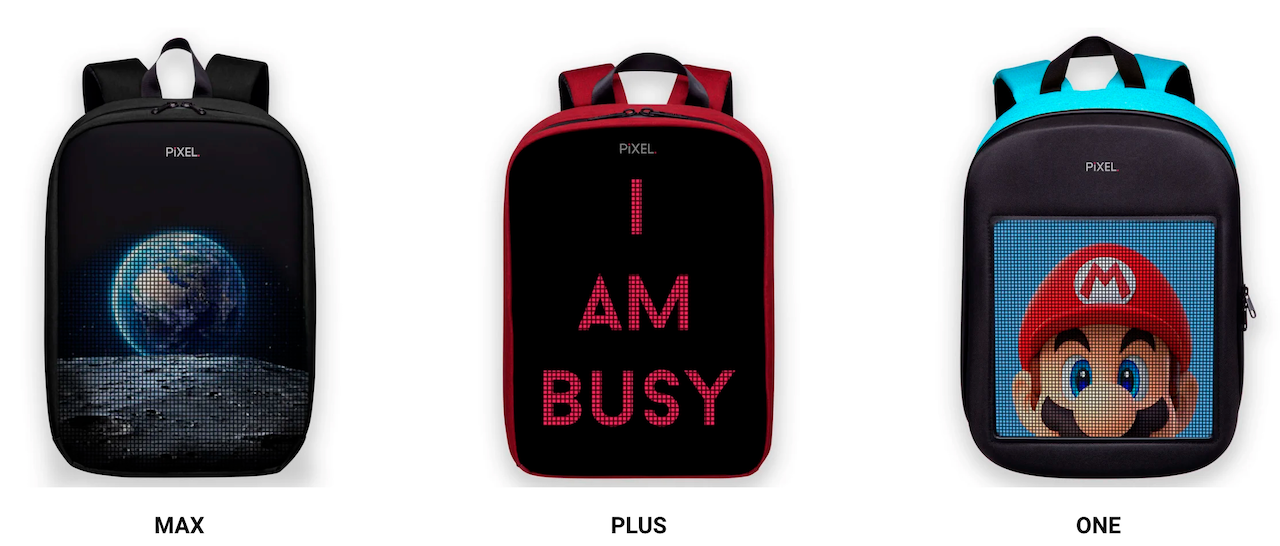
They differ not only in size, of course, but also by them including:
- MAX: 45x31x14 cm
- PLUS: 37x28x11 cm
- ONE: 44x35x13 cm
Since I was primarily looking for a model for a child, at first I looked closely at the
youngest model , but in fact it turned out that the MAX version is quite suitable, although it looks a little bulky on small backs.
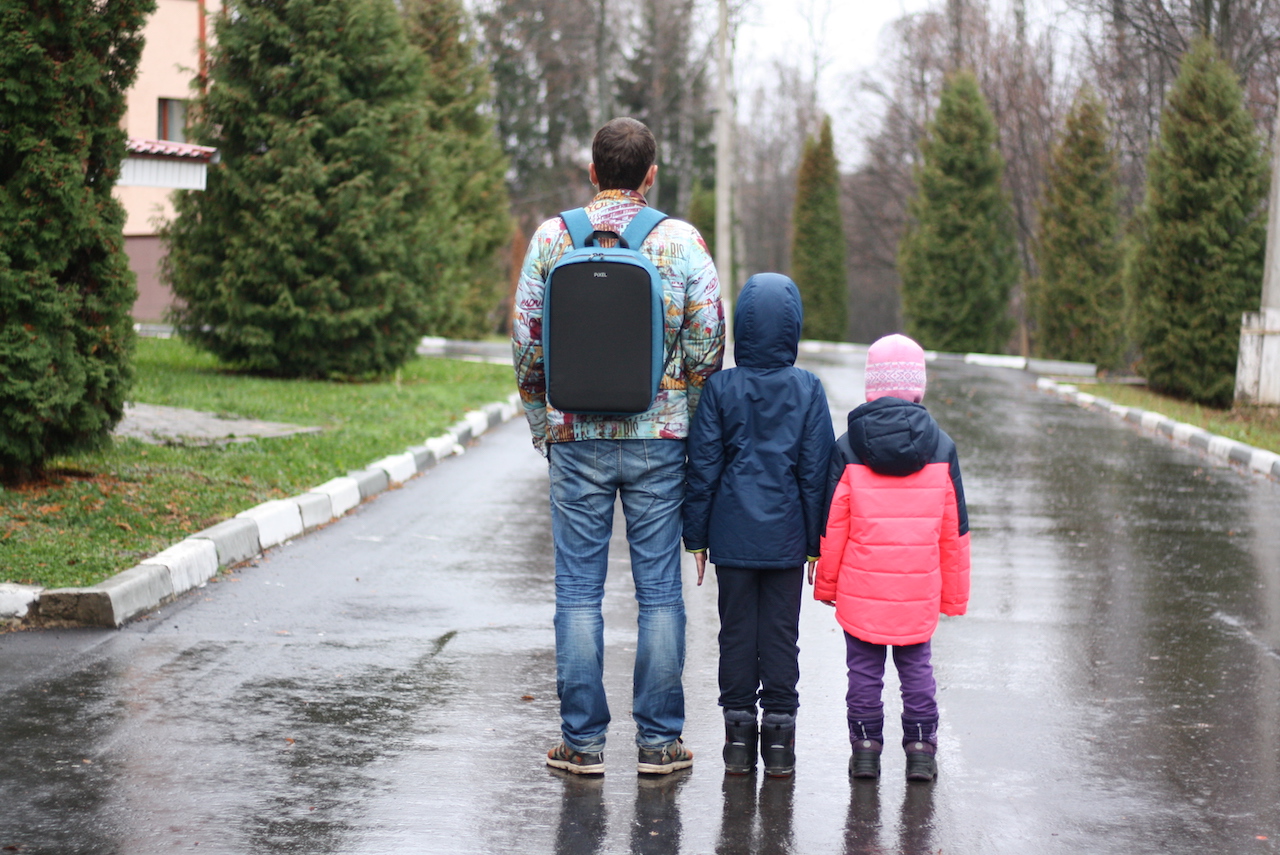

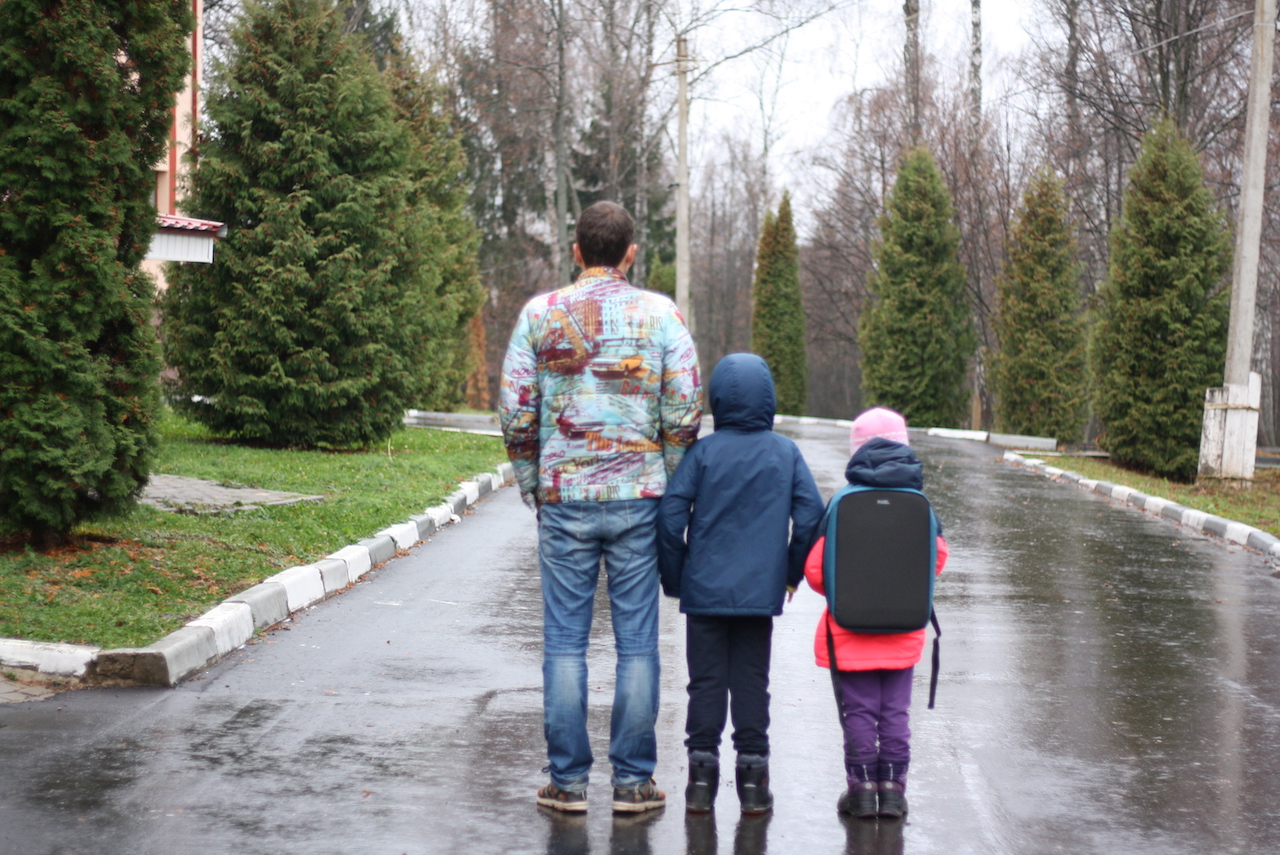
It is possible to adapt if desired, but it is much more correct for the child to choose the
middle model . Another thing is curious with the children's audience: the company itself, as its representative confirms in the dialogue, is now not oriented towards children.
It seems strange to me, because the delight of my couple just seems to indicate otherwise, but that is - that is. Pixels are for adults, and certainly do not want to become school bags, remaining in the niche of urban backpacks.
However, school history may not grow together for one more reason.
As for the general impression, I note again that the backpack sits on the back quite comfortably, and the size can be described more as universal. With the growth of 120+ and properly tightened straps, he will rather go down to the pope rather than rest against the neck, as in the photo above.
SpaciousnessWhy am I even puzzled by the problem of a normal schoolbag, is because I quite often observe this picture:
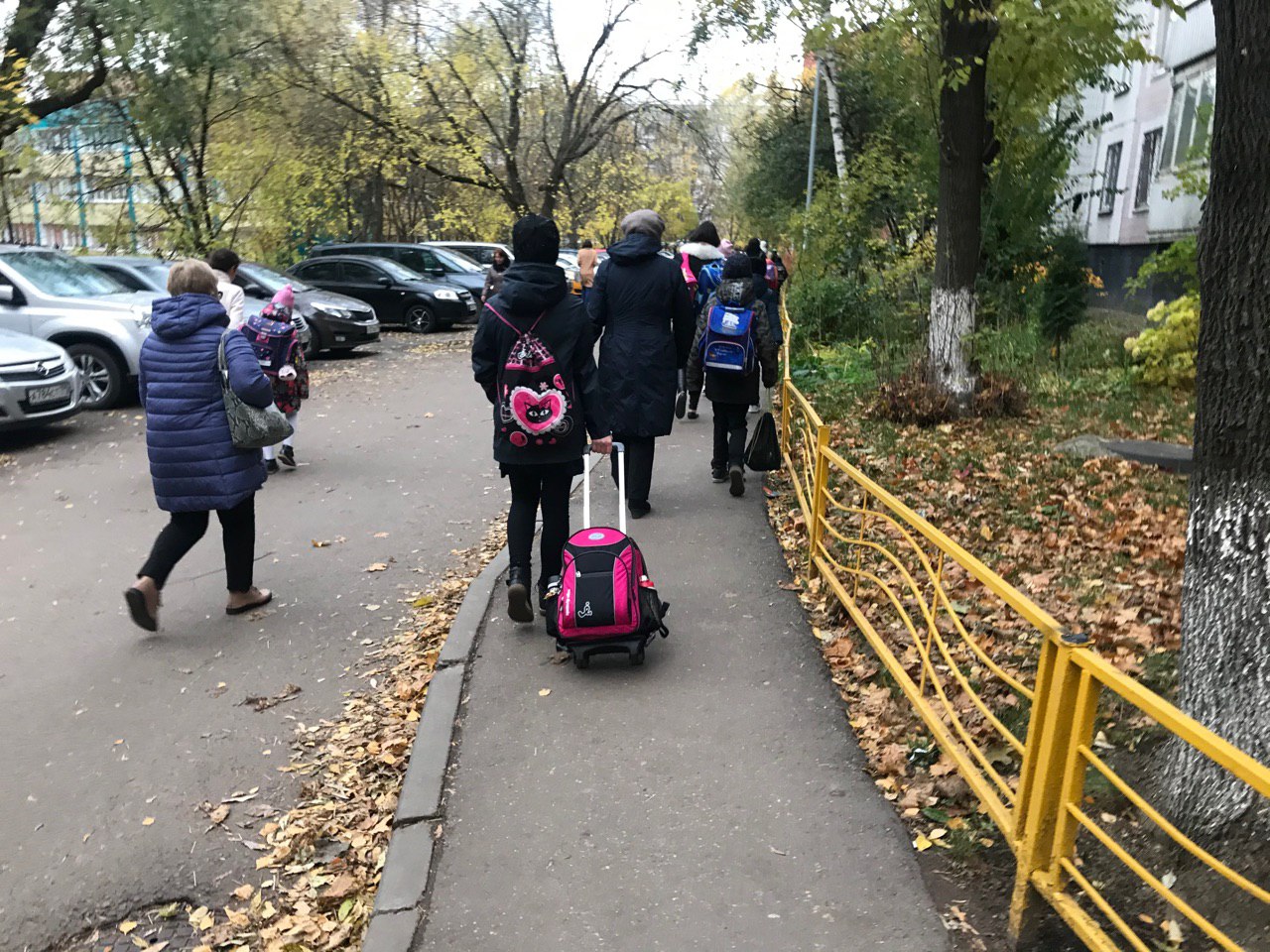
With a fairly average secondary education, we already have such a load by weight at the very initial stage that, probably, education will soon begin to be calculated in kilograms altogether. In this sense, the same Bobby captivates me with the idea of proper weight distribution.
Pixel with its lightness + attractiveness for the child himself has good potential in the eye, and outwardly - comparable to what we drag on the backs every day.
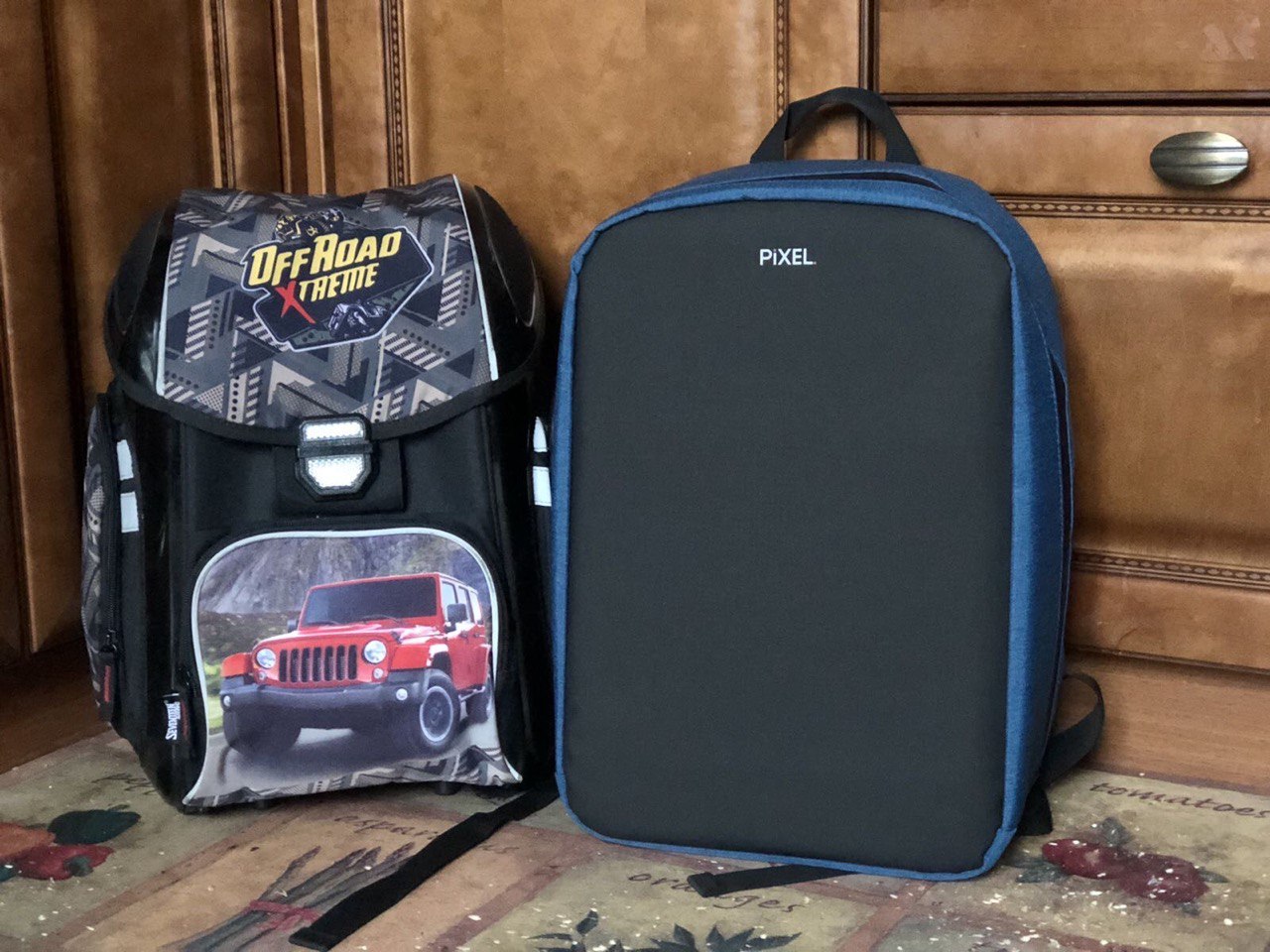
At the same time, it maintains its shape quite well, is widely disclosed, and has an organized internal structure. I myself managed to transfer a couple of laptops in it, PowerBank (which, by the way, is necessary), water, small + eat and stick and put everyone almost to the top, if you do it tetris-like.
But at the same time I must admit that even the maximum model for the modern visitor of the filling will be small. Starting from 8-9 until the final - please, the institute where we used to go with a universal notebook at one time - no problem, but the needs for elementary school are slightly more than the possibilities of a backpack. Therefore, be careful and watchful.
There is also some guile in the description when it comes to the six compartments inside.
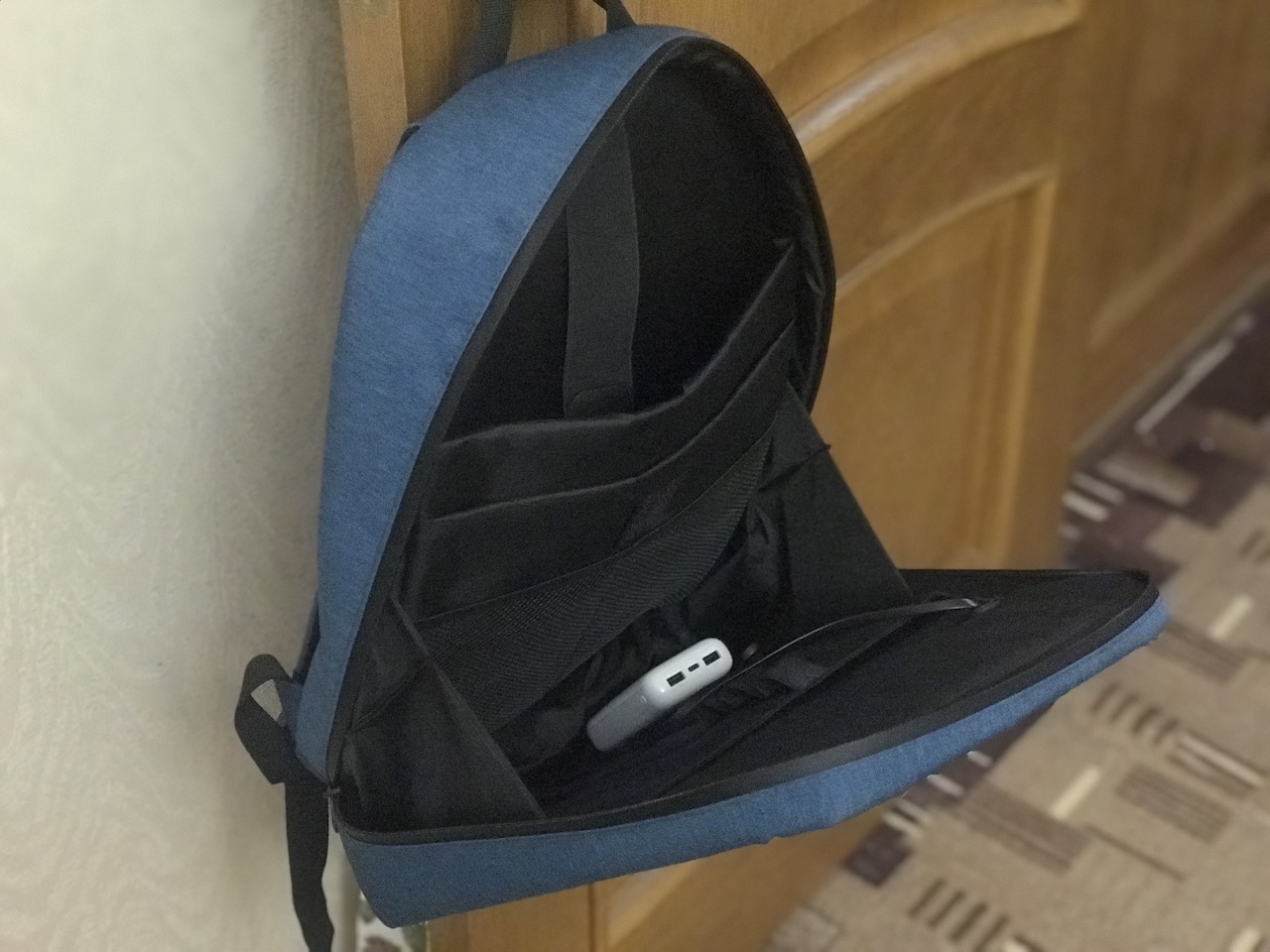
There are really six of them: two compartments in which I drove two laptops. A grid is attached to them, one main and a pocket on the back. To push things over them is a simple matter, and in urban life an office worker hardly needs more space. But the main load falls on one main thing.

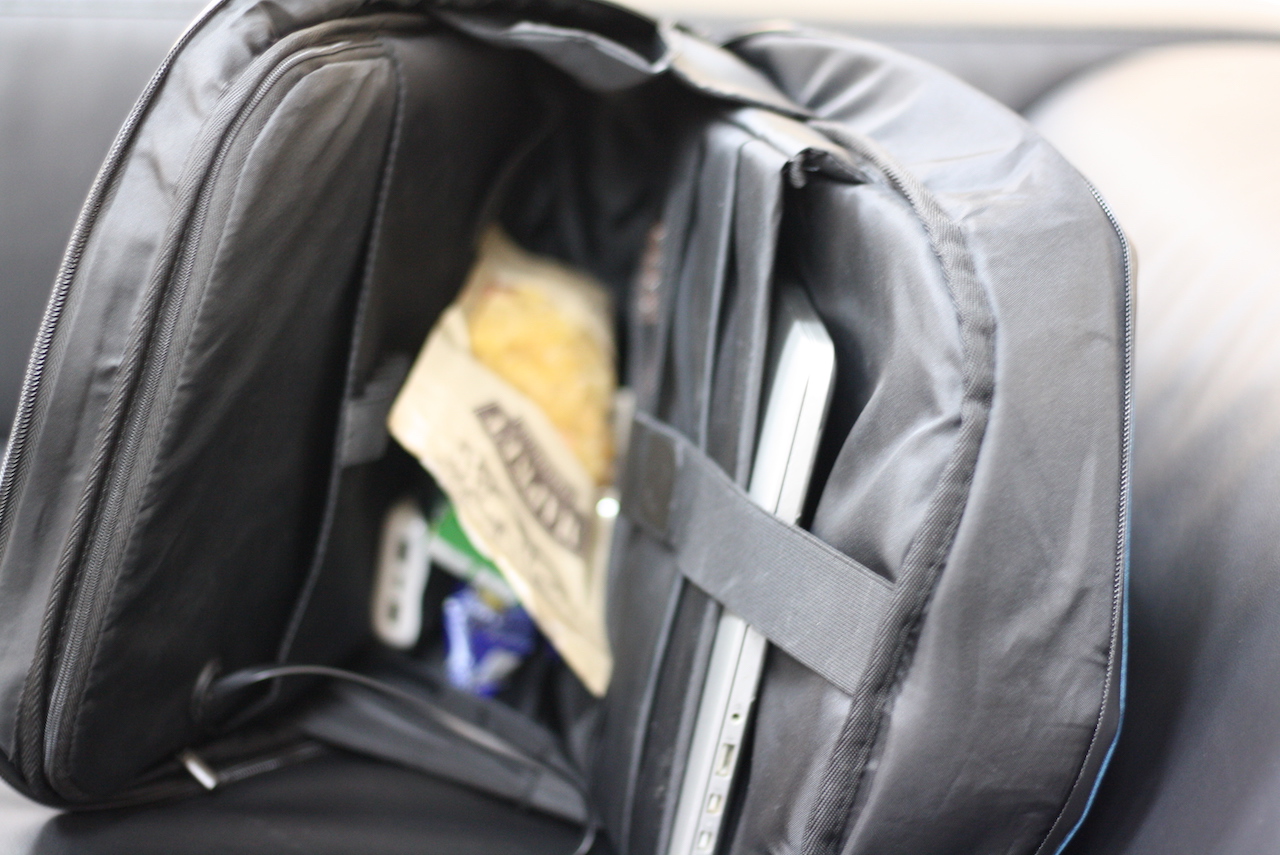
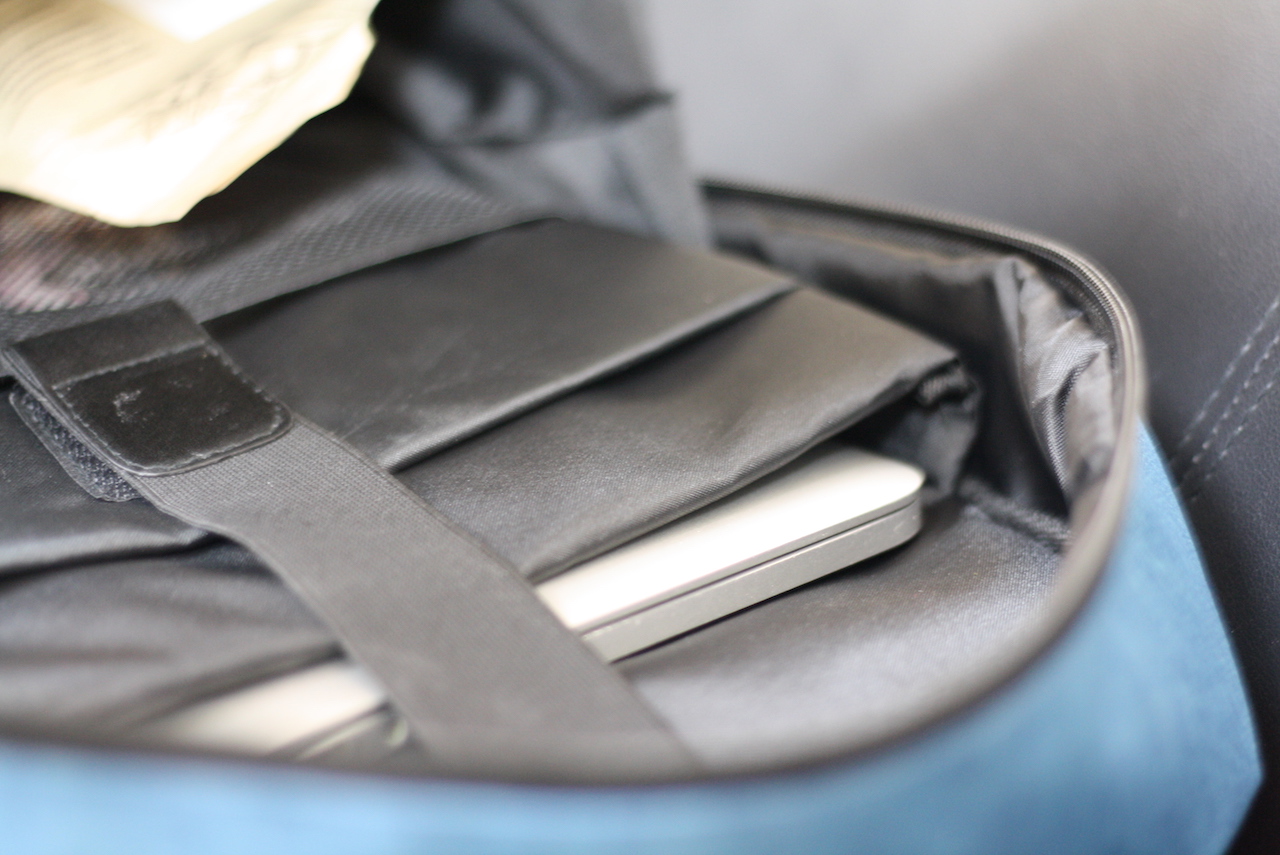
In some photos above, a wire emanating from the body and lightning is noticeable. Actually, we come to the most curious: to what distinguishes this urban backpack from all other urban backpacks.
In terms of spaciousness, I will summarize that for a laptop, an umbrella, documents, keys, a wallet and other pleasures of urban life, this urban backpack will be enough. If you want to put more needs into it, you need to understand that you will have to do this in a pile, so that some porridge will be brewed there. The backpack itself will add about 900 grams to the total weight.
ScreenThe first thing I did when I got a Pixel in my hands, of course, I did this:
Sorry, let's continue. The key feature of backpacks with displays is, of course, the display. On the one hand, we are surrounded by displays everywhere from personal smartphones to urban spaces. On the other, but how else to stand out. Is it necessary to stand out at all? What is allowed? And why is it and so on. In this subsection, I propose to think about it together.
Firstly, I’ll say right away that I really got a huge amount of positive emotions when I played with this whole family. A small queue of two children alternately formed around the smartphone with the application running, shouting “now it's my turn”. They drew, wrote, launched gifs and stuff, stuff. Plus, we spent part of the time with Pixel in a hotel where people of all ages glanced with curiosity and approval.
It was fun. But there are nuances.
The first is mapping. Pixel backpacks have a screen of 25x25 cm with a resolution of 64x64 pixels. Despite the fact that they support over 16 million colors, some images are less legible, some more.
Well, firstly, of course, lighting and the angle of view, and the distance to the picture can affect.
For example, in clear weather with a too colorful image, it looks something like this:
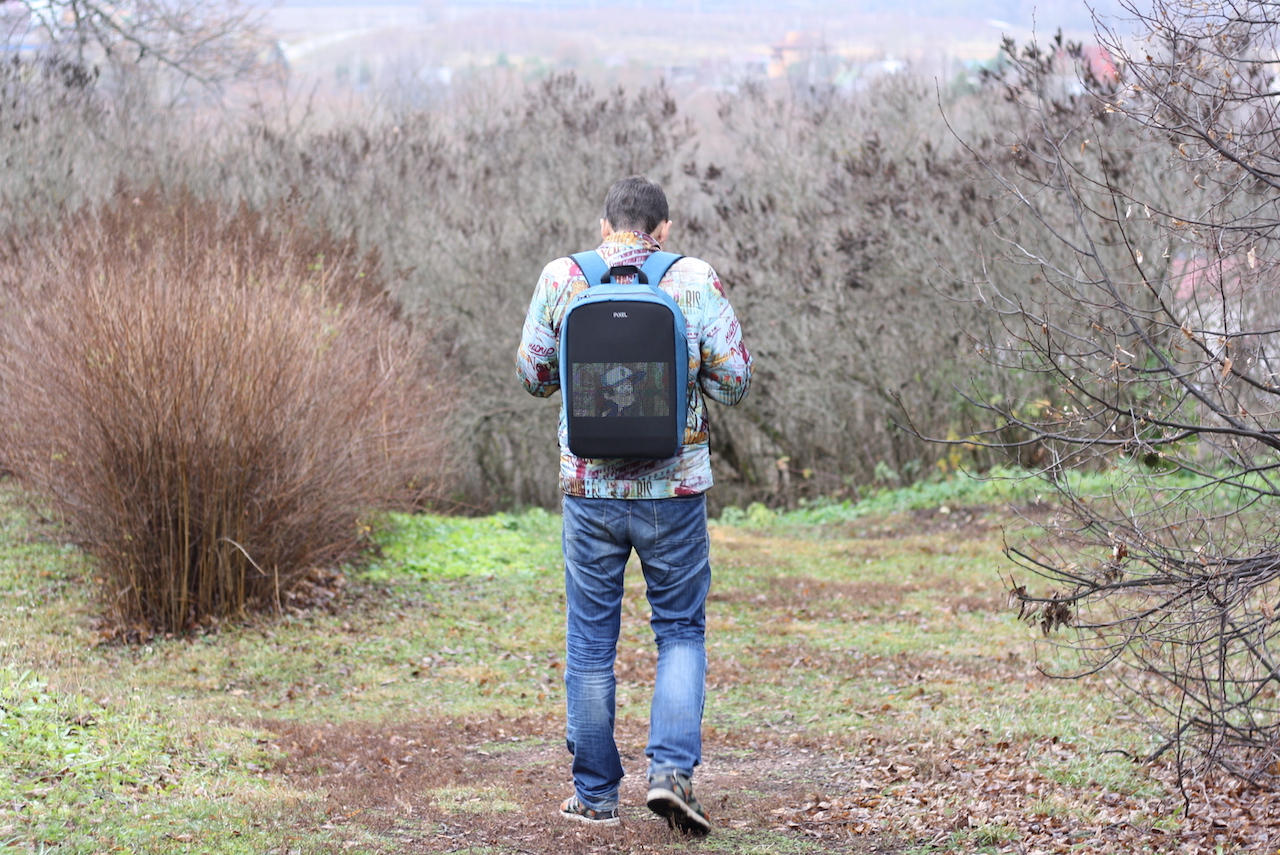

Original:

At the same time, I still admit that we shoot so-so with a SLR camera, because the visual effect is much better. Indoors in the light / in the dark.

Pictures with a smaller palette go, of course, better.
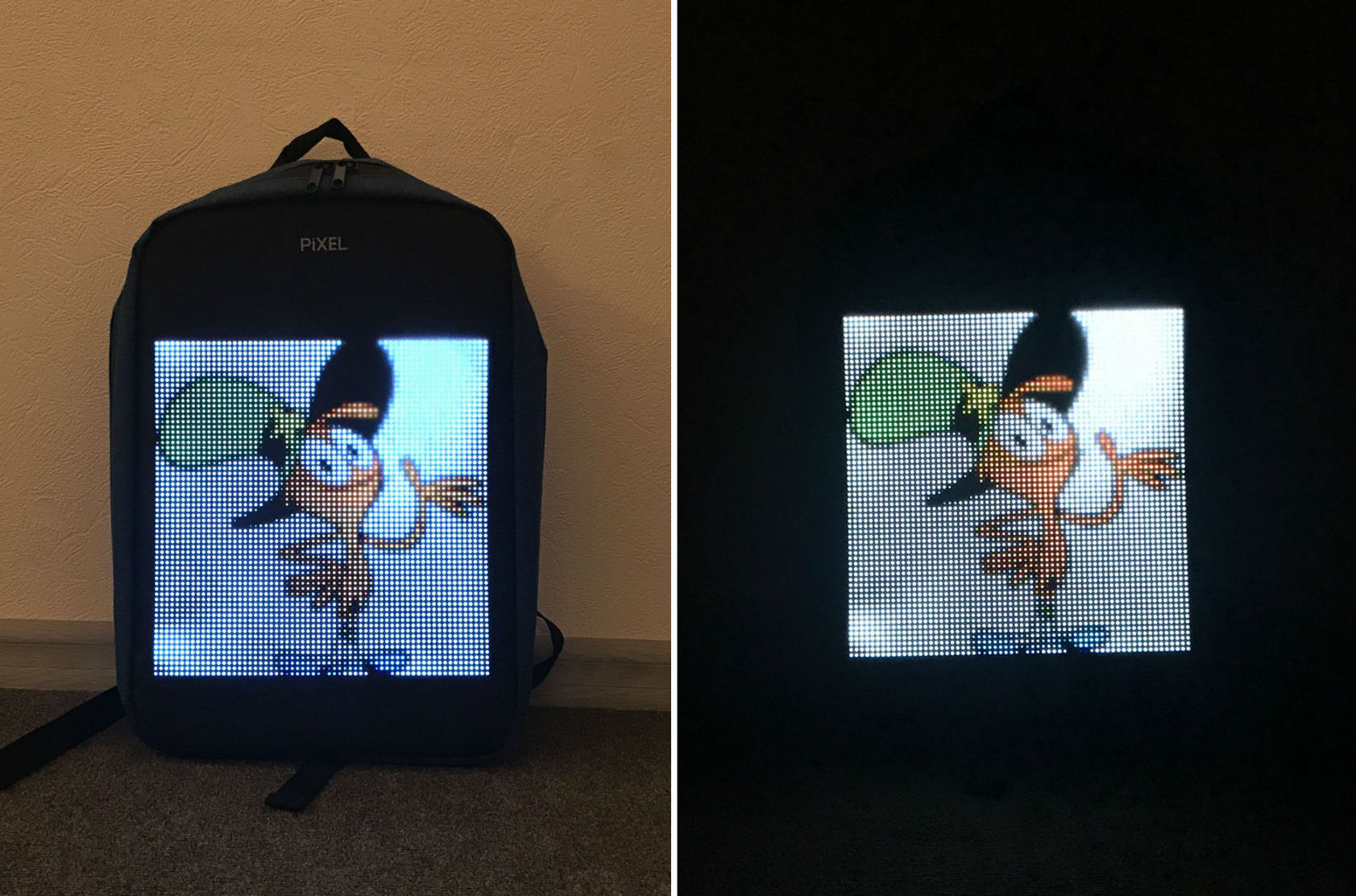
Original:

In my opinion, it copes with its tasks. With a certain distance and the correct selection of the picture, everything is visible perfectly, the images are recognized. The internal content in the application considering this, and the color scheme of the drawings that Pixel offers to load is adapted for a better perception.
How to use it? Plenty of room for the right decisions. Perhaps the extra display will be appreciated by advertising agencies for special projects or just companies that will equip their couriers with such backpacks and ask them to carry a logo on their backs. In general, bearing this in mind, we can get a new wave of corporate gifts for NG - quite worthily. From the point of view of safety, there is also something to think about: people wear rather dark clothes, and such a display is an opportunity to express oneself in the dark. And just a custom backpack every day - why not?
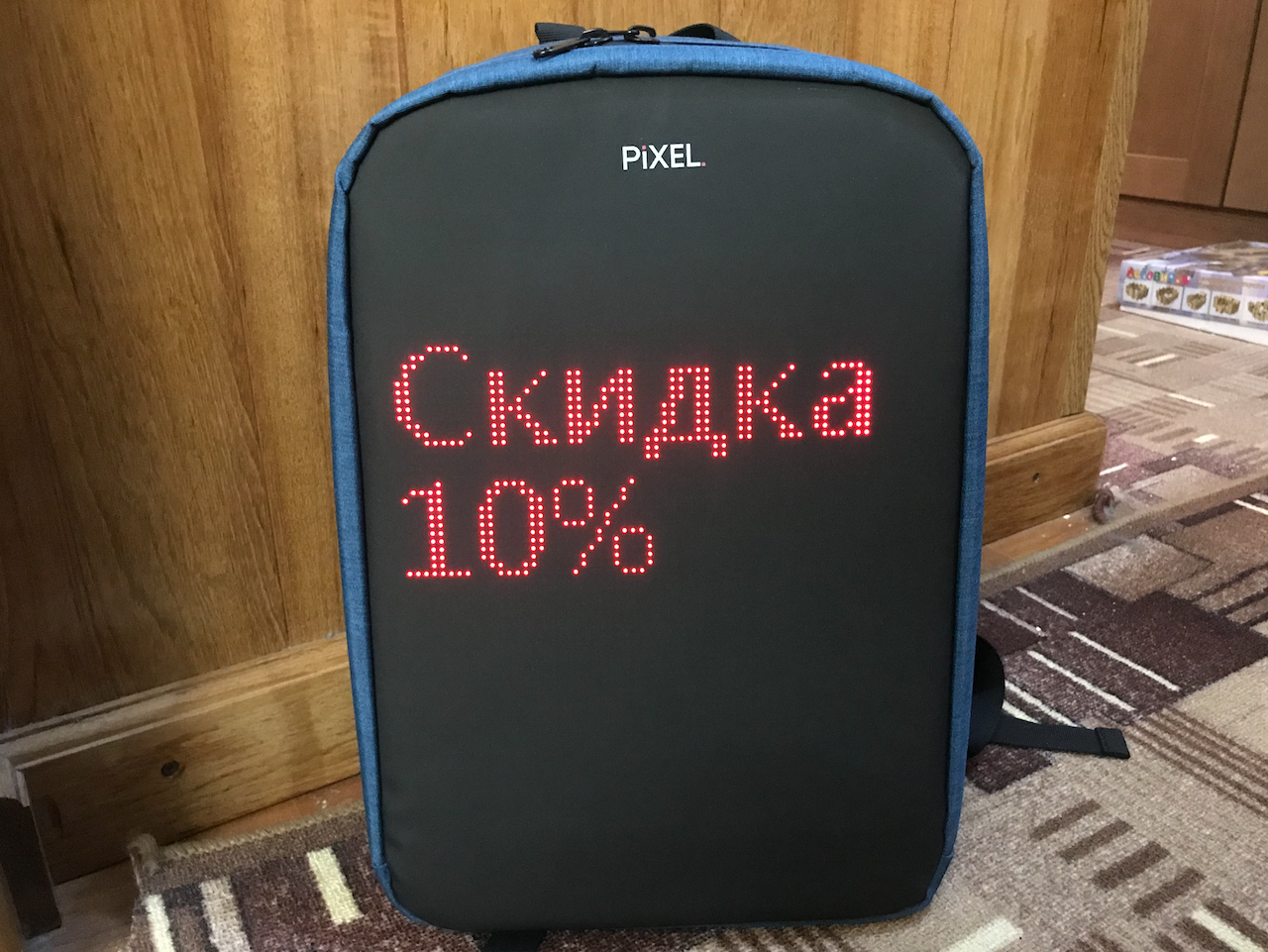
By the way, for a better display, it is desirable that the backpack be filled with something. The protective coating is not glued to the display itself, so part of the inscription with an empty backpack can be fuzzy.

As a result, I can say that the display, when used correctly, can bring both joy and benefit, but it does not draw on all the value. As with any gamification element, you play enough fast and the backpack becomes an ordinary backpack.
In all three models, the display is exactly the same. The only difference is that in Plus and Max it is “hidden”, which makes it visually larger if, for example, you select pictures on a black background.
In the ONE backpack, the display is embedded in the case.

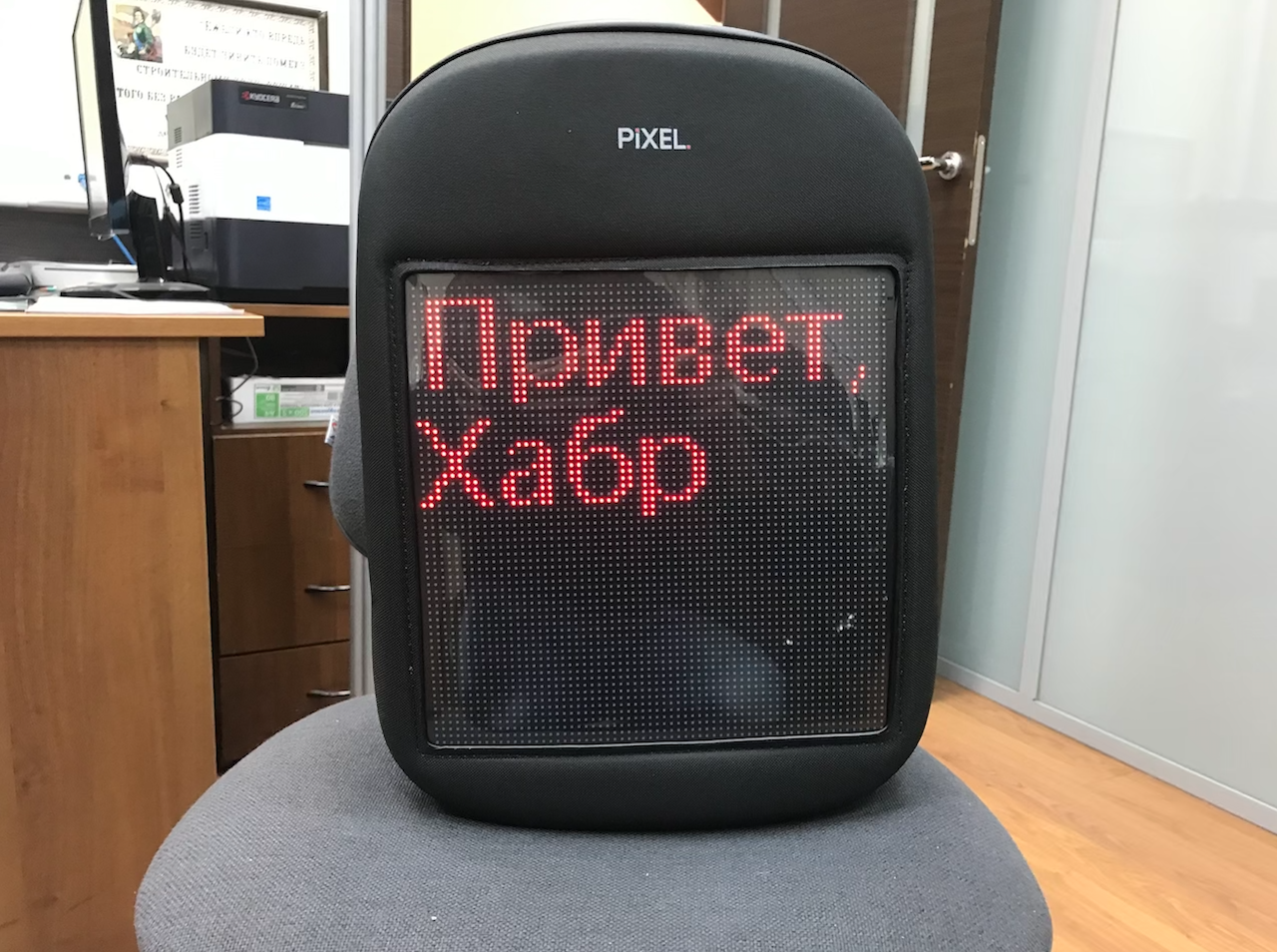
By itself, from an aesthetic point of view, as for me, it is inferior to older models, however, I put a few photos.
applicationThe screen is controlled through the Led Space application. Visually - this is not a masterpiece of design thought, but functionally good and understandable.
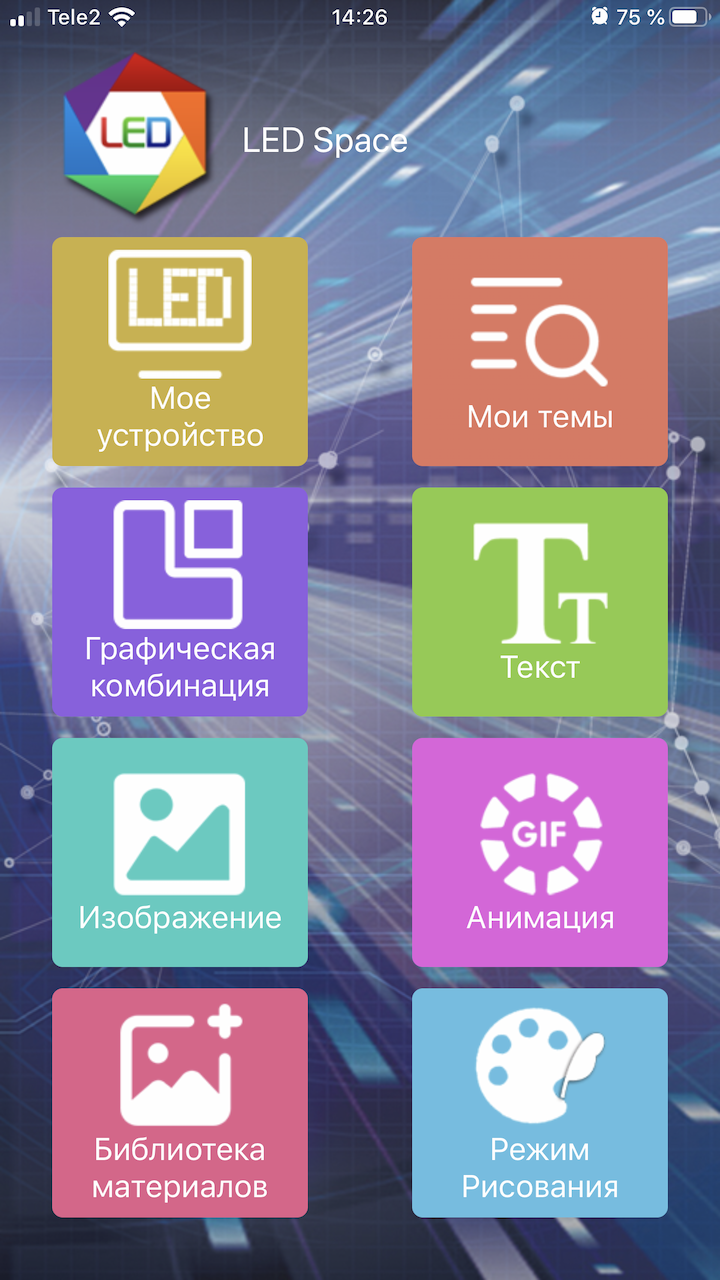
It should be noted oddity: the backpack connects to the smartphone as a Wi-fi point (the password is quite simple, so I recommend changing it right away). Accordingly, at the time of using the backpack, loading any information there, you will lose LTE connection.
There are 8 subparagraphs in the appendix, of which 5 are creative:
- Text
- Graphic combination
- Picture
- Animation
- Drawing
By going to each point you get access to the interface and settings. For example:

As you can see, here you can change the font, size, color of the text, etc. The “Duration” menu requires special attention. You can load a lot of things alternately on a backpack, turning the panel into a slide show, so you need to remember to configure the timing of each element.
There are a lot of built-in pictures and animations - they are in the "Library" section.
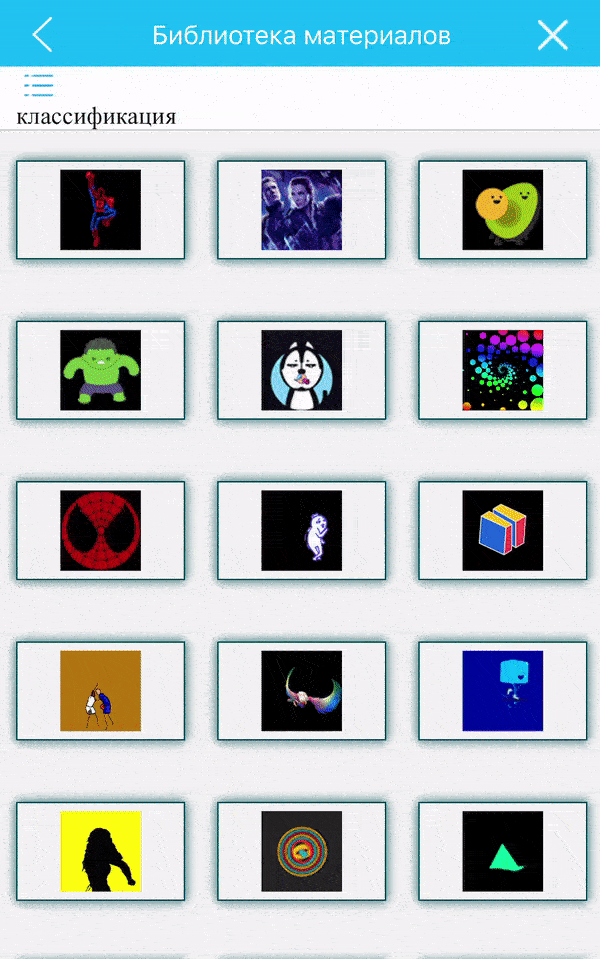
The rest of the menu items are as follows:
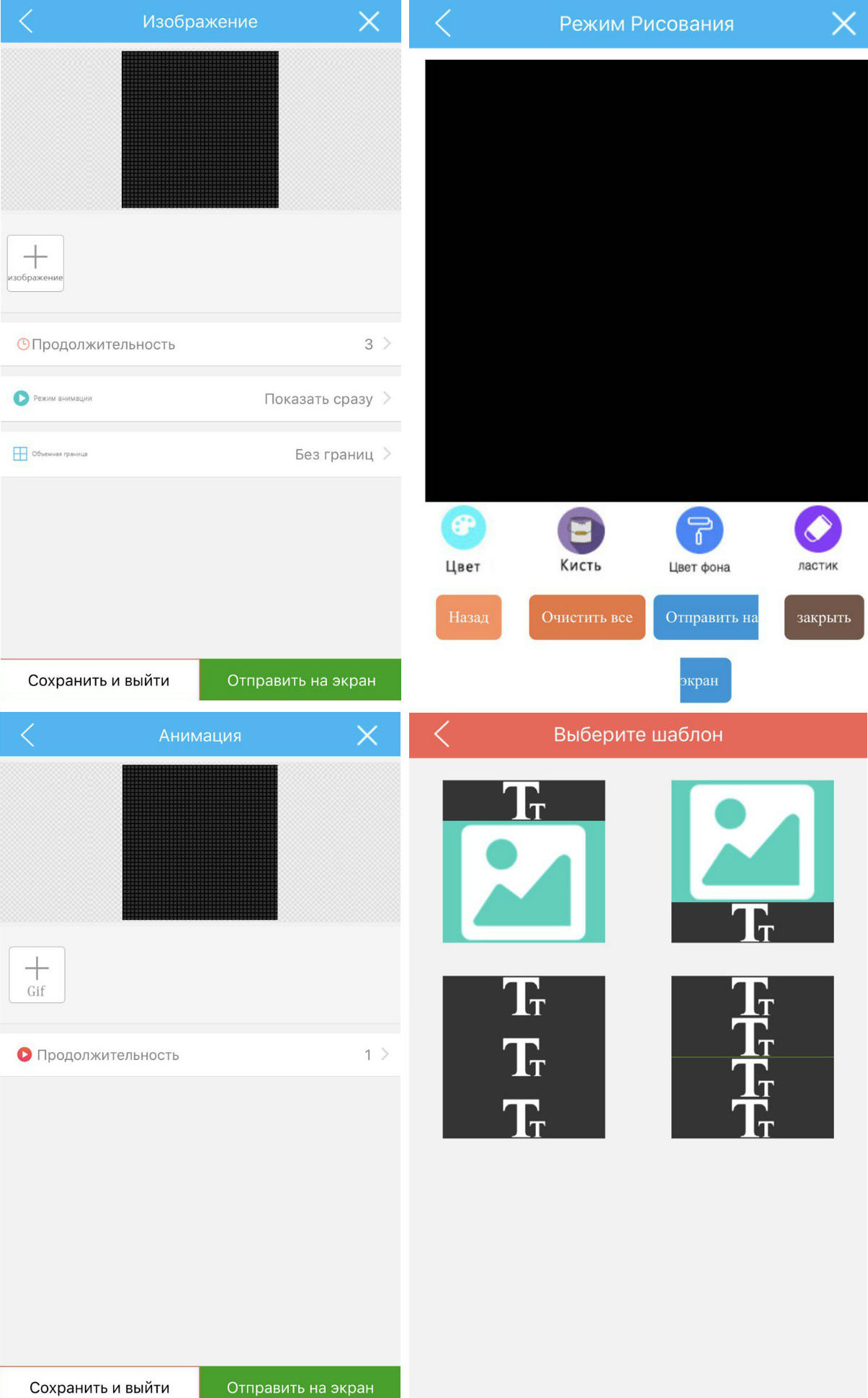
- Image - it is assumed that you upload your image from the gallery.
- Drawing mode - a simple editor with the ability to select a brush, color, background color.
- Animation - you upload your gif.
- Combined mode - you can make an inscription and add a picture to it. Actions are similar to the “Text” and “Image” menus separately.
The application is criticized in terms of appearance + somewhat depressing, but I still did not find the ability to gradually clear the screen of elements, you can only delete everything at once, which is somewhat offensive with a large number. Otherwise, in terms of ease of operation and functionality, it is quite acceptable. Pictures are stored inside, so it’s not necessary to redo materials every time. Separately, I would say that Bluetooth was quite enough.
PowerbankThe backpack display is powered by PowerBank, that is, the joke is that the backpack did not charge, so it didn’t come, it’s already breaking straight from the tongue. The jar, of course, is not built-in, so you buy it separately and charge it separately. 10 mAh was enough for me for a full day - 8 hours. At 8 in the morning I turned it on - at the beginning of the fifth the screen went blank. This is with constant use!
General conclusionIn general, the second-generation Pixel models came out very worthy: for a child in extracurricular life, it really makes sense to consider the
Plus version as more prestigious, which will be a perfectly suitable gift for the next NG.
The Max model as a whole is also a universal dimensional solution, but it looks a bit cumbersome up to a certain height. This is a new assortment (
official site ).
And finally, the
Pixel One is the simplest design, with its merits, in the form of a more durable case cover, for example. Not a single backpack gives any visual advantage - everywhere there is one size and one resolution.